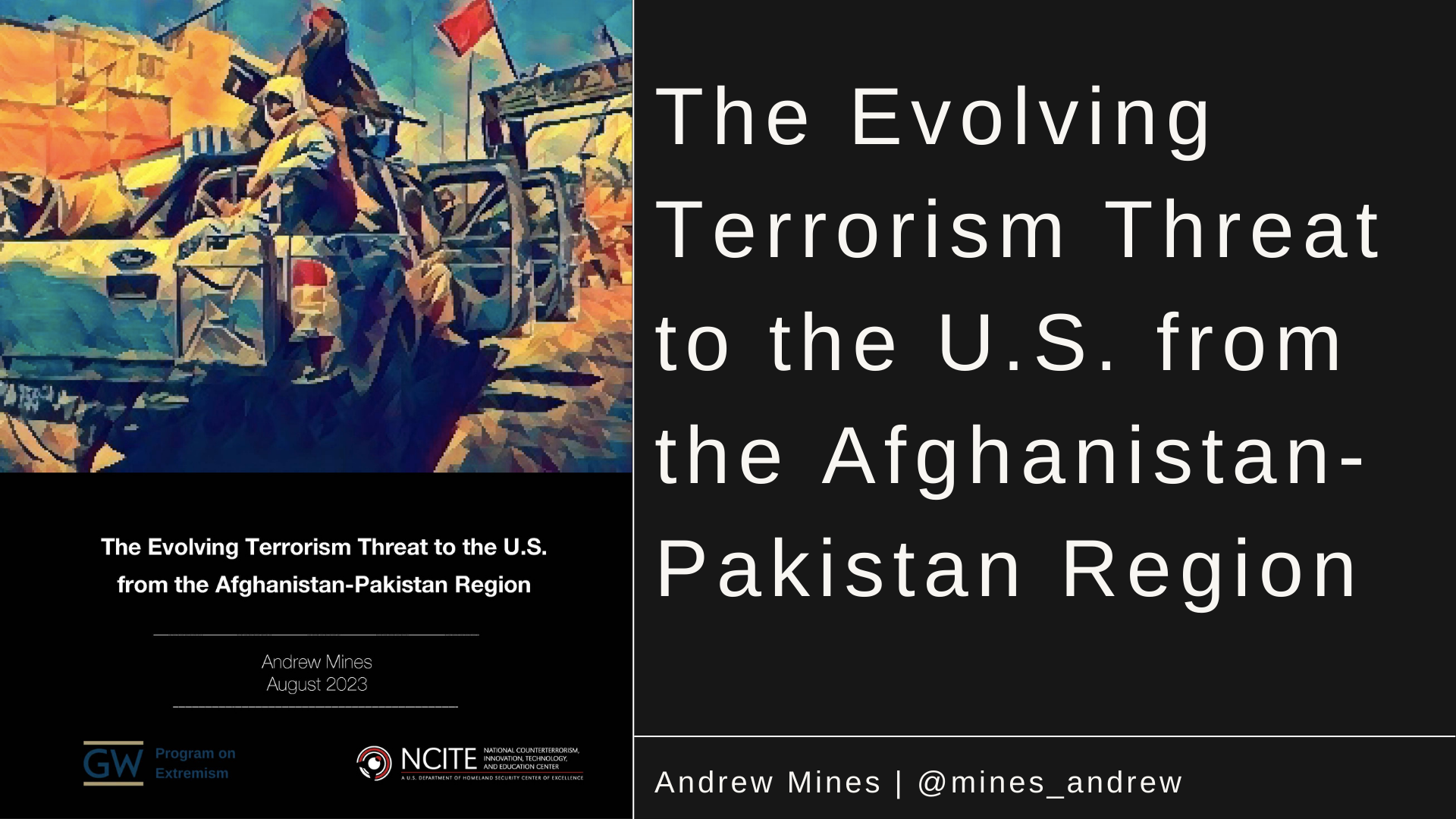This report provides an updated assessment of the international terrorism threat to the U.S. emanating from the Afghanistan-Pakistan (Af-Pak) region. It examines the impact of the Taliban takeover in Afghanistan on the current security situation, how networked global organizations like the Islamic State and al-Qaeda have adjusted, and what the outlook is for foreign fighter flows and potential attacks on U.S. soil and interests abroad. It leverages a dataset of 205 individuals with a concrete connection to the Af-Pak region charged in U.S. courts for terrorism-related activities from 1985 to April 2023. By analyzing current dynamics with historical perspective, this report aims to provide key contours that will help to better understand the evolving situation on the ground, as well as implications for homeland security interests. It finds that:
● The overall caseload of travel attempts and attack plots with a nexus to the Af-Pak region has declined significantly since the early 2010s. Similarly, success rates for both travel and attack plots have also declined significantly.
● Al-Qaeda has dominated the U.S.-focused jihadist landscape in the region in terms of its share of travel attempts and attack plots. The Islamic State’s regional affiliates and particularly its core province in the region, ISIS-K, have struggled to compete for American recruits and pose a more significant threat to U.S. homeland security interests despite over eight years of official presence. However, there are multiple indicators of ISIS-K’s intentions and potential to constitute a more direct threat to U.S. interests going forward.
● Individuals’ motivations for travel and attack plotting centered around narratives of resistance and revenge, as well as inspiration from past Americans who served as models to idolize and emulate. These narratives consistently feature across decades of cases and will be a decisive factor in which of the region’s jihadist groups, if any, proves successful in mobilizing future generations of Americans.
● 92% of travel attempts were routed to or through Pakistan. Three cities served as key arrival hubs for American travelers to the region: Karachi, Lahore, and Peshawar. Increased training camp presence along Afghanistan’s northern border and a more permissive environment for Central Asian jihadist groups has the potential to open up a larger foreign fighter transit hub in the north of Afghanistan. Until then, Pakistan–and these three cities in particular–will likely continue to be a crucial channel for prospective American travelers. Historically, personal connections and support infrastructure in the region were vital to many travelers’ success.
● Attack plots mostly focused on a variety of critical infrastructure targets (51%) and U.S. military sites (29%). IEDs were the preferred method for the majority of attack plotters (73%). Americans’ prior experience in training camps and involvement in jihadist external operations structures served as key engines driving the volume and pace of attack plots prior to their dismantling. Continued expansion and entrenchment of both al-Qaeda and Islamic State training camps and safe havens in Taliban-ruled Afghanistan risks reversing substantial coalition gains over the last two decades.


